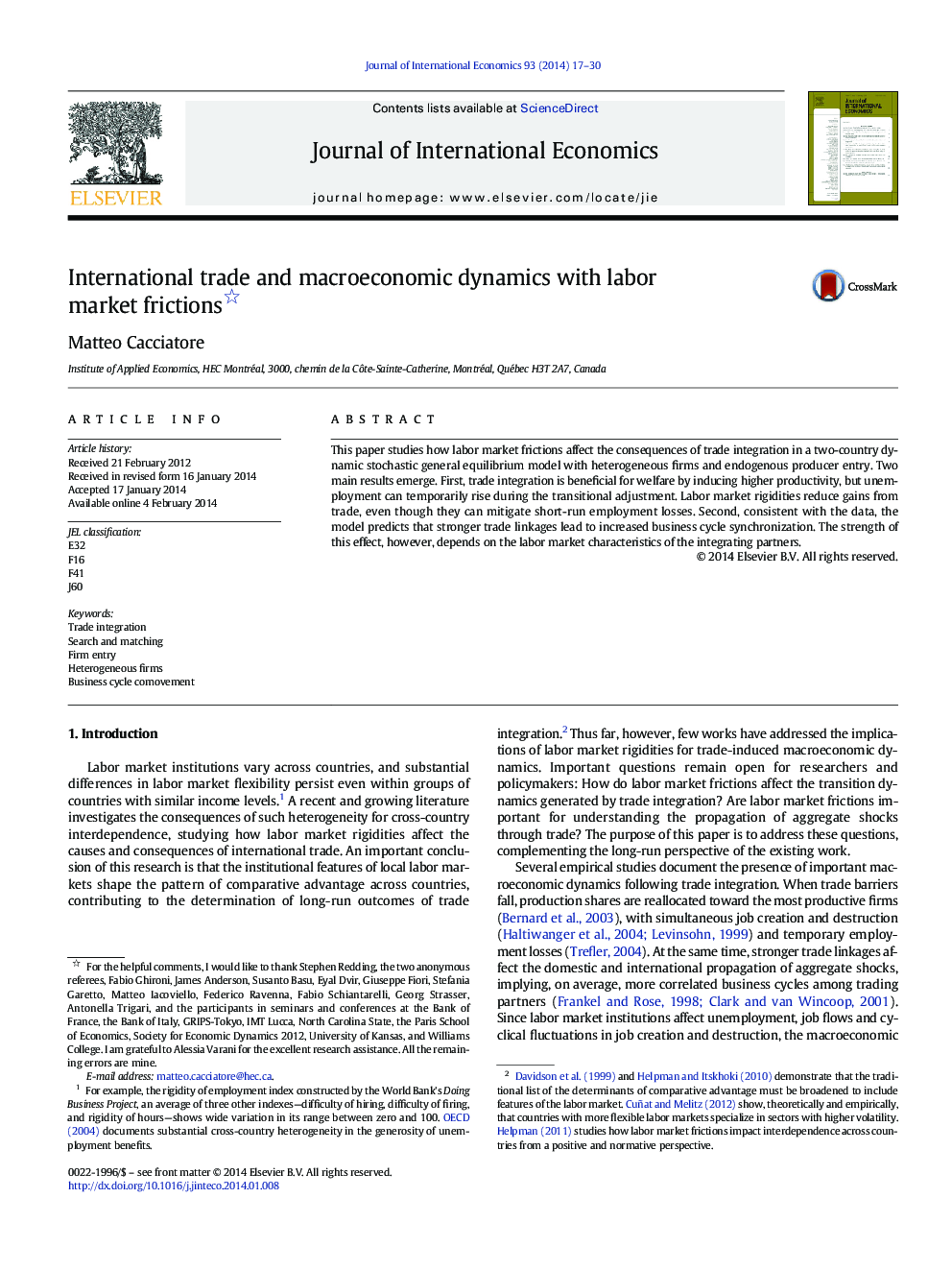| Article ID | Journal | Published Year | Pages | File Type |
|---|---|---|---|---|
| 10476990 | Journal of International Economics | 2014 | 14 Pages |
Abstract
This paper studies how labor market frictions affect the consequences of trade integration in a two-country dynamic stochastic general equilibrium model with heterogeneous firms and endogenous producer entry. Two main results emerge. First, trade integration is beneficial for welfare by inducing higher productivity, but unemployment can temporarily rise during the transitional adjustment. Labor market rigidities reduce gains from trade, even though they can mitigate short-run employment losses. Second, consistent with the data, the model predicts that stronger trade linkages lead to increased business cycle synchronization. The strength of this effect, however, depends on the labor market characteristics of the integrating partners.
Related Topics
Social Sciences and Humanities
Economics, Econometrics and Finance
Economics and Econometrics
Authors
Matteo Cacciatore,
